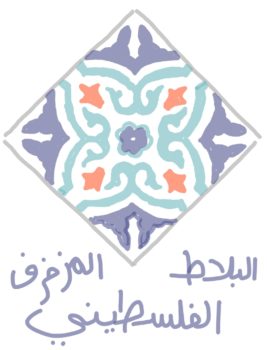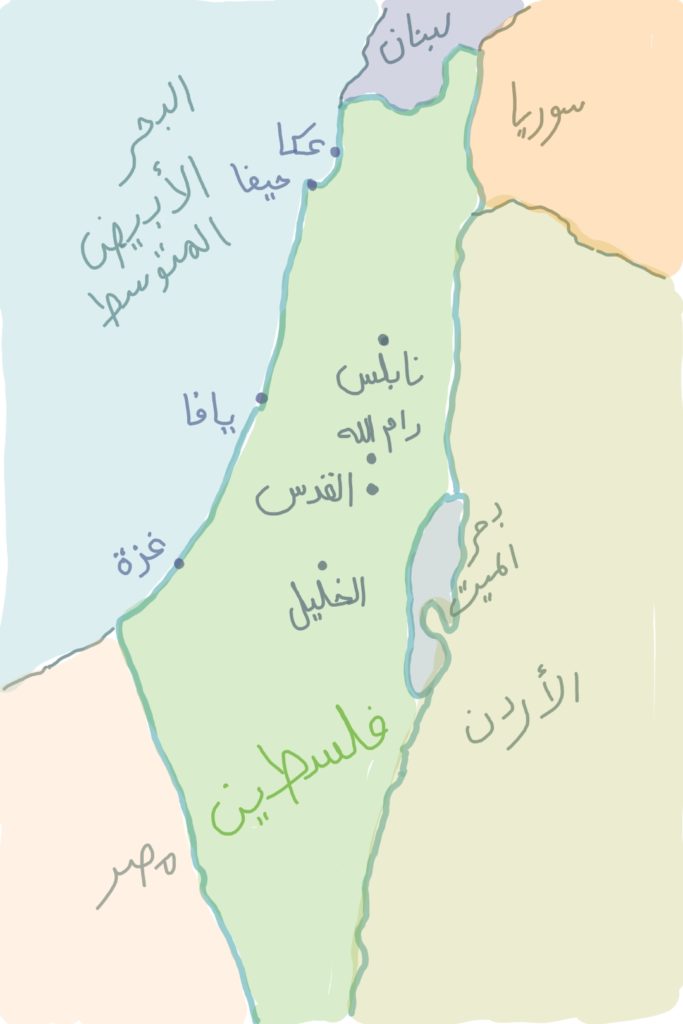The Enduring Art of Traditional Palestinian Tiles Part One Posted by yasmine on Feb 9, 2022 in Arabic Language, Palestine
In this post, we’ll watch and listen to a clip about the Palestinian heritage of making colored ملون and decorative مُزَخرَف tiles بلاط. A trade that is finding difficulty in staying alive in an area under occupation الإحتلال amidst an unstable market.
You will hear the reporter speaking in لغة عربية فصحى and the men who work with these tiles speak Palestinian Levantine dialect اللهجة الشامية الفلسطينية.
I have transcribed and translated the clip so you can read along as you listen if needed, as well as help you answer the comprehension questions that follow.
But before we begin, I want to point out that this clip touches on the effects of the 1948 Arab–Israeli War which is an extremely important event that took place in Arab history. It is often referred to as حرب ال٤٨ and النكبة. As an Arabic language learner interested in Arab history التاريخ العربي, it would be good to know the basic facts surrounding this event.
Here is an article and clip by Aljazeera about النكبة in Modern Standard Arabic.
https://www.aljazeera.net/encyclopedia/military/2015/5/14/%D8%AD%D8%B1%D8%A8-1948
This clip also mentions many Palestinian cities مدن فلسطينية. Can you name a few Palestinian cities? If you’re interested in the geography جغرافية of Palestine, pay attention to these names and refer to the map خريطة below to see their location.
In this post, we’ll cover the first part of the clip from the beginning to minute (1:13).
مصنع “أصلان” أول وآخر معاقل البلاط المزخرف والملون في فلسطين
مصنع “أصلان” أول وآخر معاقل البلاط المزخرف والملون في فلسطين
“Aslan” factory is the first and last stronghold of decorative and colored tiles in Palestine
قرن من الزمان عمر هذا المكان. آخر مصانع البلاط المحلي المزخرف وأولها في مدينة نابلس. هذه صنعة “الأصلان” التي يعمل بها اليوم الجيل الرابع بنفس الأدوات وبنفس التقنية وفي ذات المكان بجمال مدخله وروعة إنتاجه. ولكن مع دعم لا يذكر لهذه الصناعة التي يحاول الاحتلال السيطرة عليها كجزء أساسي من سيطرته على الهوية الفلسطينية المعمارية.
This place is a century old. The last of the local decorative tiles factories and the first in the city of Nablus. This is the work of “Al-Aslan” where the fourth generation is working today, with the same tools, the same technology, and in the same place, with the beauty of its entrance and the splendor of its production. But there is little support for this industry which the occupation is trying to control as an essential part of its control over the Palestinian architectural identity.
ما اسم هذا المصنع؟
كم جيل عمل في صناعة البلاط المزخرف حتى الآن؟
ما هي مشكلة هذا المصنع؟
أين تقع مدينة نابلس على الخريطة؟
What is the name of this factory?
How many generations have worked in the decorative tile industry so far?
What is the problem with this factory?
Where is Nablus located on the map?
هذا بلاط ملون قديم مفش غيرنا بشتغل هذا الشغل غيرنا. كان في يافا. ابوي كان يشتغل بسوريا وبيافا كانت بلاد الشام مفتوحة على بعضها. لما صار حرب ال٤٨، كان هذا المحل مأسس زمان صرله. فإجا حياة أبوي وكملها. كان حياة ابوي، توفى حياة أبوي، إجوا عمامي، توفوا عمامي، اجوا اخوتي، توفوا اختوي، اجيت أنا وصرلي حوالي بهاي الصنعة ٦٣ سنة. وأنا عمري ١٠ سنوات وعلمت ابني وابني علم اولاده.
We are the only ones working with these old colorful tiles. It was in Jaffa. My father was working in Syria and Jaffa. The Levant was open. When the 48 war came, (the 1948 Arab–Israeli War) this shop had already been established for a long time. So my father came along and kept it going. My father passed away, my uncles came along, my uncles died, my brothers came along, my brothers died, I came along and I have been working in this trade for about 63 years. I was 10 years old when I learned and I taught my son and my son taught his children.
أين كان يعمل والد هذا الرجل ولماذا؟
أين تقع مدينة يافا على الخريطة؟
Where did this man’s father work and why?
Where is Jaffa located on the map?
Stay tuned for part two in next week’s post. Till then, happy Arabic learning! 😊

Build vocabulary, practice pronunciation, and more with Transparent Language Online. Available anytime, anywhere, on any device.





